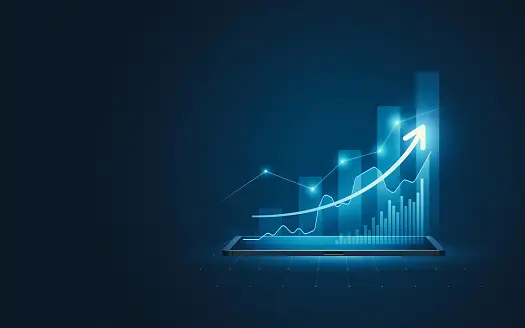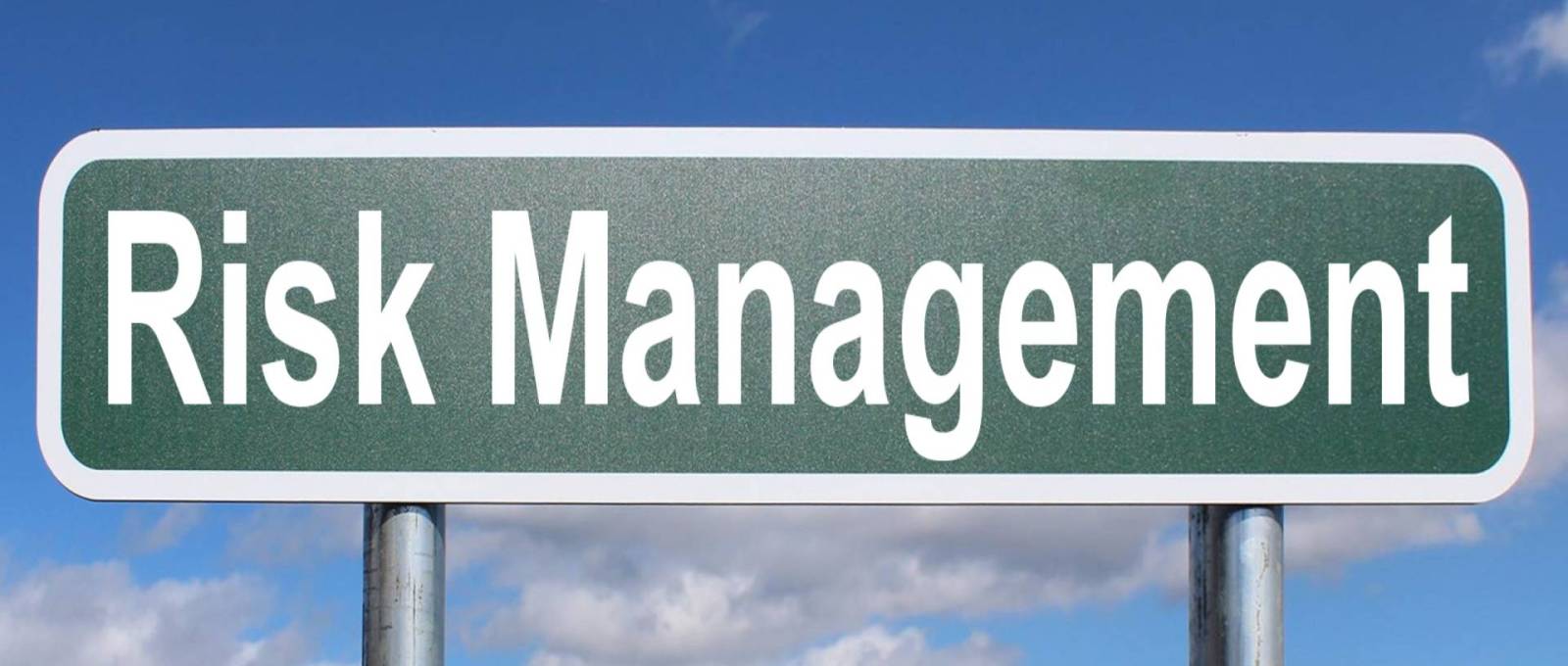The Forex market is the largest and most liquid market in the world with a daily volume of over $6 trillion, this makes it the most attractive market for traders and investors to participate in. However, engaging in forex trading involves certain risks that traders must be aware of and manage effectively. Risk management plays a crucial role in forex trading, as it helps traders protect their capital, minimize losses, and increase the chances of long-term profitability.
Risk management in forex trading refers to the process of identifying, assessing, and controlling the potential losses that may arise from various factors, such as market volatility, leverage, margin, liquidity, and human errors. By applying risk management techniques, traders can reduce their exposure to unfavorable market movements and limit the impact of losses on their account balance.
Types of Risks In Forex Trading
Below are some of the risks involved in the forex market. Remember, Forex trading is a risky venture and the only sure way to avoid all risk is to not trade at all, presence of risk in forex trading guarantees reward for traders who can manage the risks properly. NO RISK NO REWARD! We’ll look at the risks briefly in this section and later look at the different strategies traders can use to manage the risks inherent in trading and become profitable.
1. Market risk

This is the risk of losing money due to unfavorable movements in exchange rates.Market risk can be influenced by various factors, such as economic data, political events, natural disasters, and market sentiment. For example, if a trader buys EURUSD, and the euro depreciates against the dollar, the trader will incur a loss. To mitigate market risk, traders should use appropriate risk management tools, such as stop-loss orders, hedging strategies, and diversification.
2. Human errors
Human errors are one of the most common and costly types of risk involved in forex trading. They can result from poor decision making, lack of discipline, emotional biases, or insufficient knowledge. For example, a trader may enter a trade based on a hunch or a rumor, without considering the market conditions or the potential consequences. To mitigate human errors, traders should follow a clear and consistent trading plan, use appropriate risk management tools, and seek continuous education and improvement.
3. Leverage risk
Leverage can magnify both profits and losses, but it also increases the risk of margin calls and liquidation. For example, if a trader uses 100:1 leverage to trade a $10,000 position with a $100 deposit, and the position moves against the trader by 1%, the trader will lose the entire deposit. To mitigate leverage risk, traders should use leverage wisely and cautiously, and monitor their margin levels and account balance regularly.
4. Liquidity risk
This risk occurs when one is not able to execute trades at the desired price or time due to low market activity or high volatility. Liquidity risk can result in slippage, gaps, and wider spreads. For example, if a trader wants to sell a large amount of currency at a certain price, but there are not enough buyers in the market, the trader may have to sell at a lower price or wait for a better opportunity. To mitigate liquidity risk, traders should avoid trading during illiquid times or markets, and use limit orders instead of market orders.
5. Broker default risk
This is the risk of losing money due to the default or failure of the broker or other intermediary that facilitates the forex trade. Default risk can be caused by fraud, bankruptcy, or operational issues. For example, if a broker goes bankrupt or fails to honor its obligations, the trader may lose some or all of their funds.

To mitigate counterparty risk, traders should choose reputable and regulated brokers that offer adequate protection and security for their funds.
Risk management Strategies in forex trading
Having looked at some of the common risks available in forex trading now let’s look at the various strategies traders can use to manage the risks.
1. Developing a trading plan and strategy

Traders should have a well-defined trading plan and strategy that outlines their entry and exit points, risk-reward ratio, position size, stop-loss and take-profit orders, and trading rules. They should also test their strategy on a demo account before using it on a live account and review their performance regularly to identify their strengths and weaknesses.
2. Setting realistic goals and expectations
Traders should have a clear idea of what they want to achieve from forex trading and how much they are willing to risk for it. They should also avoid being influenced by emotions, such as greed, fear, or overconfidence, that can cloud their judgment and lead to irrational decisions.
3. Using appropriate leverage and margin
Leverage is a tool that allows traders to control a larger amount of money with a smaller deposit. However, leverage also magnifies the potential losses as well as the profits. Therefore, traders should use leverage wisely and avoid overleveraging their account. Margin is the amount of money that traders need to maintain in their account to keep their positions open. If the margin level falls below a certain percentage, the broker may close some or all of the positions to prevent further losses. Therefore, traders should monitor their margin level closely and avoid margin calls.
4. Diversifying the portfolio
Traders should not put all their eggs in one basket and diversify their portfolio across different currency pairs, time frames, and market conditions. This way, they can reduce their exposure to a single currency or correlated market and benefit from various opportunities.
5. Managing emotions and stress
Trading can be stressful and emotionally draining, especially when facing losses or uncertainty. Therefore, traders should manage their emotions and stress levels by maintaining a positive attitude, learning from their mistakes, taking breaks, and seeking support from others.
What are the benefits of applying Risk Management?
1. Minimizing Potential Losses
One of the primary reasons why risk management is essential in forex trading is to minimize potential losses. The forex market operates with high leverage, which means that even small price fluctuations can have a significant impact on traders’ positions. By implementing risk management techniques, traders can set appropriate stop-loss orders and position sizes to limit the amount of capital they may lose in unfavorable market conditions.
2. Preserving Trading Capital
Preserving trading capital is crucial for long-term success in forex trading. Without effective risk management, traders may risk losing a significant portion of their capital, making it difficult to recover and continue trading. By implementing risk management strategies such as setting risk limits, diversifying trades, and using appropriate position sizing, traders can protect their trading capital and ensure its longevity in the market.
3. Emotion and Psychological Control
Emotions can significantly impact trading decisions and lead to irrational behavior. Fear and greed are common emotions that can cloud judgment and result in impulsive trading actions. Effective risk management helps traders maintain emotional control by setting predefined risk tolerance levels and adhering to well-defined trading plans. By having a disciplined approach to risk management, traders can mitigate the negative influence of emotions and make more rational trading decisions.
4. Enhancing Consistency and Longevity
Consistency is a key element of successful forex trading. Implementing risk management practices ensures that traders have a systematic and consistent approach to their trades. By following well-defined risk management strategies, traders can maintain their trading discipline, avoid impulsive decisions, and increase the longevity of their trading careers.

5. Controlling Market Volatility
Forex markets can be highly volatile, with prices fluctuating rapidly. Risk management techniques help traders navigate and control the impact of market volatility. By implementing appropriate risk management measures, such as adjusting position sizes and setting stop-loss orders, traders can protect themselves from sudden market movements and minimize potential losses.
Conclusion
Risk management plays a crucial role in forex trading. It is an essential practice that helps traders minimize potential losses, preserve trading capital, maintain emotional control, enhance consistency, and control market volatility. By implementing effective risk management strategies, forex traders can increase their chances of long-term success and navigate the dynamic and unpredictable nature of the forex market.






You should take part in a contest for one of the most useful websites on the web.
I most certainly will highly recommend this site!
I appreciate your feedback.